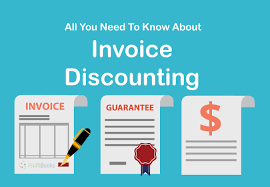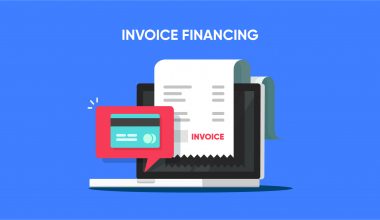In this article, you will find all you need about Invoice Discounting and benefits, the difference between invoice discounting vs factoring. Also, you will have knowledge of its process, agreement, benefits, and lists of invoice discounting or account receivables companies globally. Therefore, have a good time reading. Next, let’s discuss what it is, and a lot more of it.
Invoice Discounting
It as a process is a method by which businesses get quick cash from their unpaid clients’ invoices to add more value to their sales ledger. It’s easy: a business borrows money against its outstanding invoices. The business gets a percentage of the invoice’s total money from the lender. This method helps in increasing the business cash flow.
Invoice discounting works similarly to factoring because the lender knows you owe the money in the invoice. The lender will lend you some percentage of the money before your client actually pays. But, however, there is quite a difference between invoice discounting vs factoring which is discussed below.
Read More: Cash Flow: All you need to know, simplified (+ free format)
Invoice Discounting VS Factoring
Invoice discounting vs factoring both involve invoice financing. They are also a means for companies to borrow funds against their debt to receive cash-tied invoices. However, there are many differences between them, and it depends on how they work. Below are the major difference between invoice discounting and invoice factoring.
Difference Between Invoice Discounting and Invoice Factoring
With invoice discounting, the business still retains control of its sales ledger. They are also in the position to chase for payment of unpaid invoices from their customers. But, the customers pay the outstanding invoices into the account with the business name but managed by the funding company. With this, it remains a secret to the business customers that a third party is involved.
While in invoice factoring, the lender takes full charge of the business sales ledger and cash flow. The lender or factoring company take also full responsibility for the collection of the outstanding invoice payment from customers. However, the customers pay the outstanding invoice to the factoring company, and customers are aware of the third party.
Another major difference is with discounting a business borrows money against its outstanding invoices. But in factoring, the business sells its outstanding invoice to a factoring company. Meanwhile, both are quick ways of raising funds with unpaid invoices.
Read Also: Micro Loans With Guide To Help You Make Informed Decisions
Invoice Discounting Benefits
It is a quicker and faster method to receive cash than applying for a cash credit. Below are the main benefits.
#1. Fast Cash
Invoice discounting makes the provision of cash fast and quick for businesses once an invoice is issued. It increases the inflow of cash by turning sales receivables or unpaid invoices into cash.
#2. Free Locked Fund
Basically, this is the most crucial part of its benefits, as it ensures locked funds or cash in an outstanding invoice over a period of time can be released via invoice discounting. Invoice discounting also turns business account debtors into cash fast, thereby helping in business fund expansion.
#3. Reduced invoice collection duration
Invoice collection duration refers to the time taken by accounts receivable to twirl into liquid cash. Therefore, it helps in reducing the collection period by making provisions for funds from the invoices issued.
#4. Increases Business Cash Flow
Invoice discounting helps to improve cash flow, with businesses getting up to 85% of the advance invoice amount (receivable). Meanwhile, the invoice amount has been converted into cash which now helps to improve short working capital cycles.
#5. Involve No Asset As Collateral
You can generate quick funds via invoice discounting without any asset as collateral. It is only unpaid invoices you can submit for the transaction.
#6. Has No Effect On Business Relations
When a business raises fun using invoice discounting, the relationship between the buyer and the seller maintains and kept as it is. The lender has no means of contact with the customer(the buyer), so the buyer has no idea of the third party’s involvement.
#7. Make Provision For More Credit Sales
Sales that are on credit can be twirled into cash quickly and fast. So, the company doesn’t have to bother about the cash issue that comes with credit sales using invoice discounting.
#8. Full Control
Here, with discounting, the seller still maintains its right over the sales ledger and collection of payment. The lender has no deal with the business sales control, the agreement ends between the lender and the borrower.
#9. Confidentiality
It helps maintain business confidentiality. So, the agreement between the borrower and the lender is not disclosed to the buyer.
#10. Winning Moment For Business
When a business operates with invoice discounting, it can get the fund it needs while the customer is given a credit duration. So, this makes it a winning moment for the business by helping them maintain good customer relationships.
See Also: Cash Out Refinance Loan Explained + Requirements and Tools
Why Is It Called Invoice Discounting?
As usual, you sell products or services to your customers. You generate invoices and send them to your customers for the goods or services in question. After validating the invoices, an invoice discounting company lends you the value of the invoices, minus a small percentage.
Invoice Discounting Agreement
There are issues involving cash flow in a business that can be resolved via an account receivables agreement. Outstanding and tied-up invoices can cause a major lack of cash problem for any business, no matter how much effort is put into it. Meanwhile, cash is important for paying monthly expenses such as rent and payroll.
However, with invoice finance, such as invoice discounting, the future receipt of every invoice value is a known quantity. So, taking on debts and loans to overcome the lack of cash due to outstanding invoices can be risky. Business growth and expansion depend solely on its cash flow. Invoice discounting can be a better option for businesses seeking to take advantage of opportunities in the market.
How Does Invoice Discounting Agreement Work?
When starting an invoice discounting agreement, these below are a few things to cover:
- The value of each invoice that you’ll be paid when you raise one.
- The monthly cost of having the finance agreement is generally based on how much the business turns over.
- Any interest that you’ll need to pay on each invoice.
- Any additional costs such as an arrangement fee.
- The start date and length of the finance agreement.
In practice, the agreement should define the following;
- Delivering goods or services as normal by your business. But, when the invoice is raised to the customer, a copy will go to the finance provider
- The finance provider will pay you the agreed proportion of the invoice right away, usually within a day
- The balance value of the invoice is paid to you once the customer pays the invoice into the lender’s account. This is minus any interest due to the agreement.
- This will repeat for any invoice that you raise.
- Every month, you will pay a fee to maintain the agreement.
Why Is It Called Invoice Discounting?
As usual, you sell goods or services to your clients. For those goods or services, you make invoices and send them to your customers. After making sure the invoices are valid, an invoice discounting company will lend you the value of the invoices, less a small fee.
Read Also: Business with low capital and high profit, 35 Businesses + investment guide
Invoice Discounting Process
Invoice discounting is commonly a confidential process, meaning the agreement is between a business and the finance provider. in essence, a disclosed invoice discounting process also exists, and this involves the business placing a statement on each invoice.
Therefore, each invoice with the statement, advises customers that the invoice has been assigned to a third party, the finance provider. Moreover, the business continues with the payment collection and not the finance provider.
Moreover, there are terms and conditions involved, and this may include recourse. The ability of the lender to reclaim back his money if the customer fails to pay is referred to as “recourse.” The next alternative will be without recourse’ which can be beneficial. In case there are any doubts regarding customers’ ability to pay in the long term. But a business pays a little more for discounting without recourse because the agreement will include a credit insurance policy payment.
In addition, the account receivables process offers a range of potential benefits to businesses operating in all industries. Without a doubt, the most important is having a reliable source of working capital available to use throughout each month. Therefore, this offers unlimited opportunities, as it is a great chance of planning for growth in a sustainable way.
Read More On: Financial Accounting: best practices and detailed guide + free courses
What Is Risk in Invoice Discounting?
Invoice factoring may lower your market value, as your client will be aware that you are borrowing money. This may make you appear less trustworthy. Nonetheless, it will reduce the burden on small businesses.
Accounting for Invoice Discounting
The accounting entries for invoice discounting need to have a reflection of the trade debtors’ position accurately. Also, it should reflect the liability of the cash given to the business. For example, Sky Links Ltd has an account receivables arrangement with a finance provider. And this finance provider offers them a 65% advance on all invoices raised, at 2% per invoice charge and 3% monthly interest rate. Then, Sky Links Ltd now raises and sends a customer invoice on 1 July of £40,000, which was paid in full on 10 August.
Invoice Discounting or Accounts Receivables Companies
When a company accepts outstanding invoices in form of discounts, it can be referred to as an account receivables company. However, below are among the lists of the top-ranked invoice financing companies you can look forward to for your business account receivables.
Is Invoice Discounting a Good Idea?
When used right, it can be a useful tool for managing the cash flow of your business. Some benefits of invoice discounting are that it frees up cash flow that can be used to pay employees, buy supplies, or start a growth project. It helps to ease seasonal stress and fill any gaps in cash flow.
Which App Is Best for Invoice Discounting?
- M1xhange
- Priority Vendor
- Invoicemart
- Receivables Exchange of India Ltd
Conclusion
Invoice discounting and its benefits are a quick method to improve cash flow and the working capital cycle. But, using it as an additional facility and not as a regular process is the best way. Every business should focus mainly on improving its working capital cycle, by bargaining efficiently with debtors to ensure quick payments. Accounts receivable have their benefits, but their disadvantages, like high-interest charges and fees, outweigh them. It is advisable that every business only go for account receivables when other types of financing have been attempted and failed.






